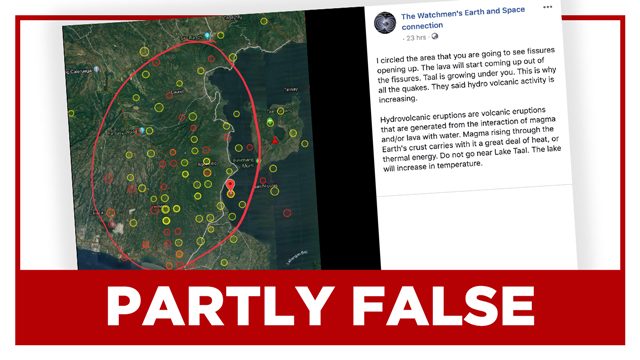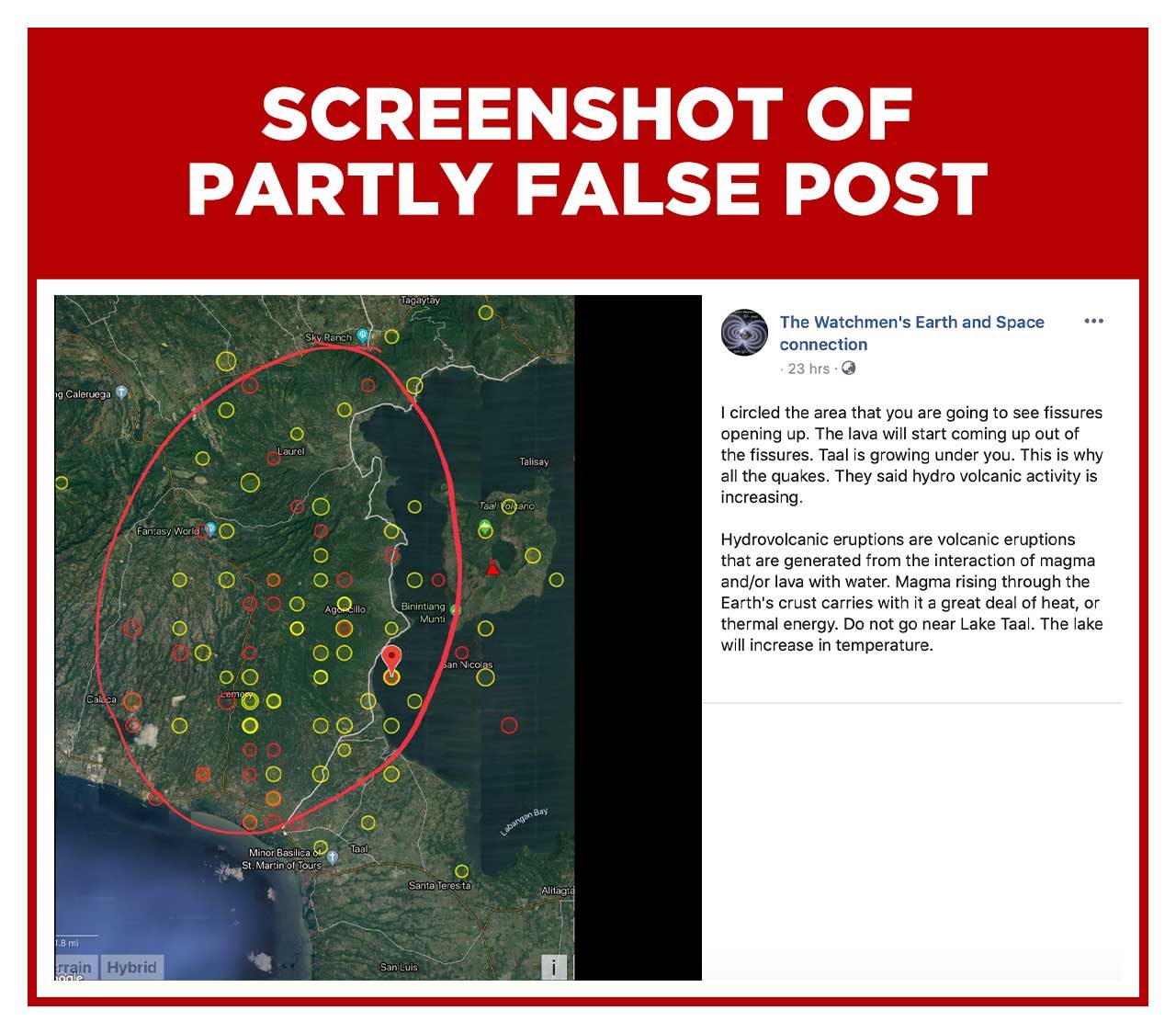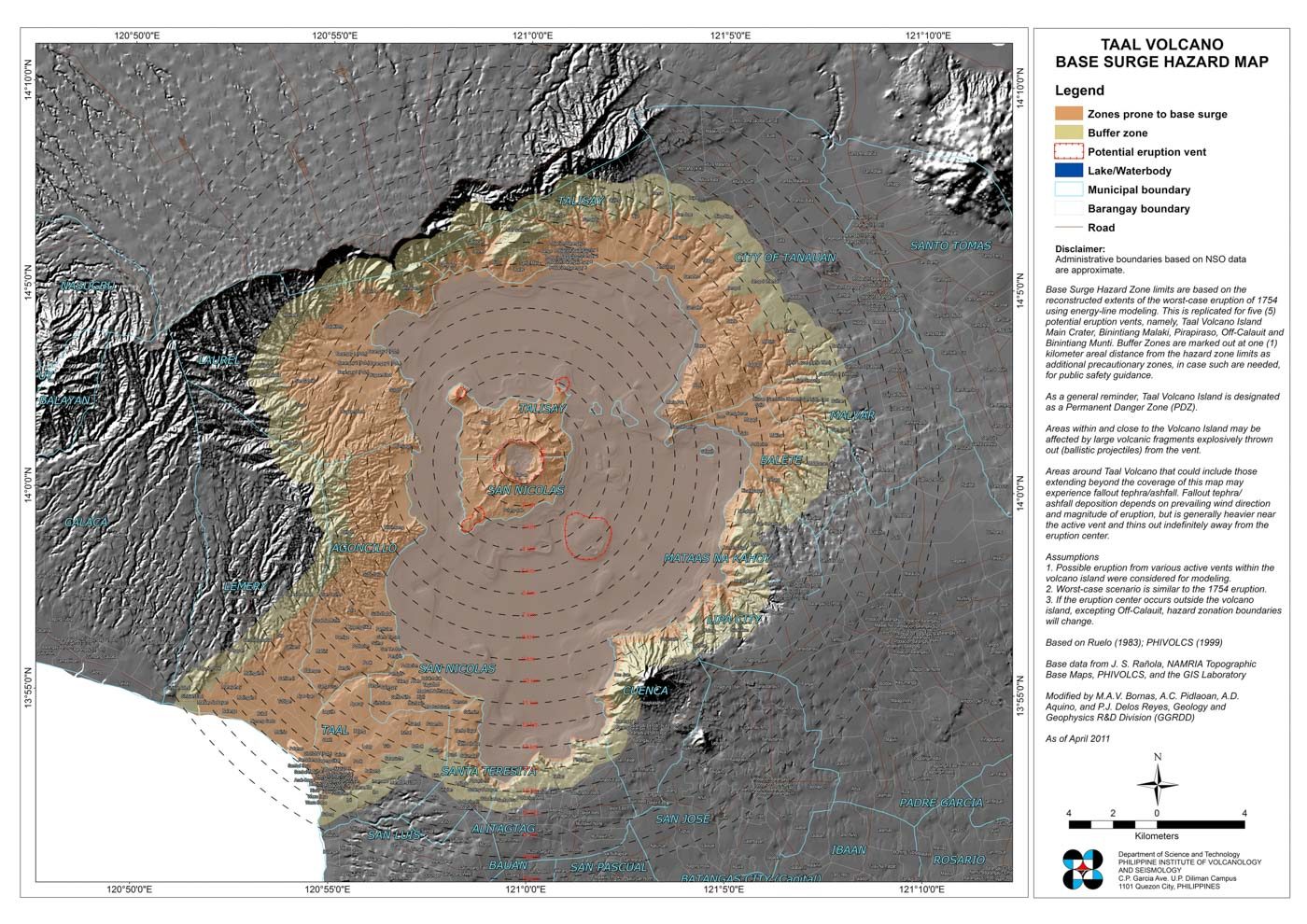SUMMARY
This is AI generated summarization, which may have errors. For context, always refer to the full article.

Claim: A Facebook post by the page “The Watchmen’s Earth and Space connection” says that fissures will open up in Batangas and lava will come out of them.
It was posted on Tuesday, January 14, two days after a phreatic or steam-driven eruption from Taal Volcano that prompted the Philippine Institute of Volcanology and Seismology (Phivolcs) to raise Alert Level 4.
“I circled the area that you are going to see fissures opening up,” the post said, referring to the accompanying photo of a map of Batangas. “The lava will start coming up out of the fissures. Taal is growing under you. This is why all the quakes. They said hydro volcanic activity is increasing.”
On the map, the Facebook page encircled the Batangas towns Laurel, Agoncillo, Lemery, and Calaca.

The post has since been taken down, but received over 3,200 reactions, 850 comments, and 2,200 shares before it was removed.
The page, which describes itself as a “page for reports on earthquakes, solar flares, and all space activity that affects our Earth,” has over 137,000 followers.
Rating: PARTLY FALSE
The facts: Though fissure vents do naturally occur, it is unlikely for lava to come out of the fissures caused by Taal Volcano in the areas encircled on the map in the post, based on the volcano’s historical eruptions.
Volcano Island is the location of all of Taal Volcano’s historical eruptions, according to the Smithsonian Institution’s Global Volcanism Project.
Moreover, Phivolcs’ hazard maps only identify 5 potential eruption vents, all of which are in Volcano Island – a permanent danger zone – or Taal Lake, not in any of the towns nearby. These potential eruption vents are Taal Volcano Island main crater, Binintiang Malaki, Pirapiraso, Off-Calauit, and Binintiang Munti. (FAST FACTS: What you should know about Taal Volcano)
Aside from eruption vents, the maps also identify areas and buffer zones that will be affected by base surges and ballistic projectiles based on data from historical eruptions of 1754, 1911, and 1965. Base surges are clouds of hot gases, ash, and rocks traveling horizontally at speeds of more than 80 kilometers per hour, while ballistic projecties are large volcanic fragments explosively thrown out from the vent.
The hazard and buffer zones include Agoncillo, but only parts of Laurel and Lemery. It also includes towns that were not encircled on the map, like Taal and Santa Teresita.


When asked about lava coming out of the fissures that have been created because of Taal Volcano’s recent activity, Mariton Bornas, chief of the Volcano Monitoring and Eruption Prediction Division at Phivolcs said: “There is no basis for these assertions, especially if judging [by] the historical eruptions.” – Rappler.com
Add a comment
How does this make you feel?
There are no comments yet. Add your comment to start the conversation.